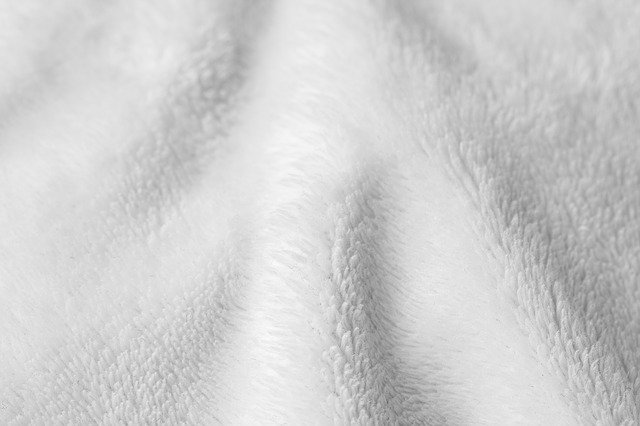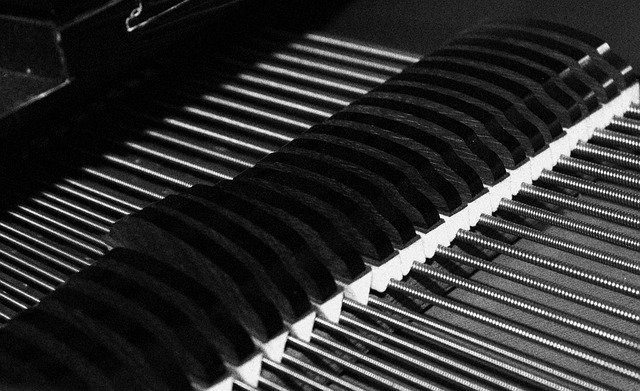How to Clean a Piano - What You Need to Know to Manage the Instrument Properly
Not all people have the capability to own a piano. Having one on your own is a great privilege. If you want your instrument to last long, it is best that you learn how to clean a piano properly and apply the right techniques and products in cleaning to avoid scratching or damaging the piano.
What You Need:
- Feather duster
- Clean White soft and lint-free cloth (flannel or microfiber cloth)
- Piano Polish
- Vacuum on reverse or a can of compressed air
Steps on How to Clean a Piano
The cleaning process is divided into two parts. The first part is cleaning the keys and the second part is the cleaning of soundboard and case board.
Part 1 - Steps on Cleaning the Keys
Step 1 - Remove the Dust
 This may or may not work to remove dust.
This may or may not work to remove dust.Using the dust feather apply light pressure to remove the dust on the keys. It is important that you are gentle when dusting as even the dust can scratch the piano. Make sure that you get into all the nooks and crannies, like between the keys.
You can do the dusting every couple of days to prevent it from accumulating on the piano and penetrate the soundboard as well as the action mechanism.
Step #2 - Cleaning the Keys

Use a white cloth made of a lint-free and soft material, such as microfiber or flannel. If you have ivory keys, use a wet cloth but wring out any excess water.
For a piano with plastic keys, use clean water with a few drops of vinegar or liquid dish detergent. Unlike the ivory keys, plastic keys are not porous and synthetic that is why you need extra cleaning products. The plastic keys are perfectly smooth and flat, and they do not have a warp or grain marks, unlike ivory.
Rub the keys gently one at a time in a back-to-front direction. Then wipe those keys again this time using a dry cloth to remove any excess water before you continue with the other keys.
Note: Avoid using synthetic materials, paper towels, and coarse clothes these materials can scratch the keys and it may cause damage. Do not use colored cloth because the color might transfer to the piano. Do not wipe the keys on a side-to-side motion when cleaning, it can push the moisture and dirt between the keys.
Part 2 – Cleaning the Soundboard and Casework
Step #1 - Clean the Finish
Using a clean damp cloth, carefully rub the outside of the piano. Start with a small section and then use a dry cloth to wipe dry those small sections. Use straight strokes following the direction of the wood grain, instead of circular motions. With this motion, you will not see any swirl marks and streaks.
Always use a soft non-abrasive cloth like microfiber or cotton. This process will effectively remove the dust and dirt in the casework as well as the fingerprints and smudges.
It is important that the cloth is only slightly damp. If you use a soaking wet cloth, you might leave behind any obvious moisture.
Step #2 – Polishing the Finish
This is done if needed only. If polishing is required, in a soft, lint-free cloth place a small amount of piano polish. Carefully rub a small section of the piano following the direction of the grain. Be careful with edges and corners, where it only has a thin layer of finish. With a clean cloth wipe the excess polish gently.
Tips:
Use only polish that is intended only for pianos, and use it only when the piano requires thorough cleaning, with some fine scratches that requires filling, or buffing. Polishing can damage the piano finish, and if it penetrates the inside, it can damage the action parts.
Never use a high-gloss polish in pianos with lacquer finish, because it is never meant to be high-gloss. Use a product that provides a satin finish. The high-gloss polishes are used only for polymer finishes.
Never use regular furniture polish, avoid products with lemon oil, stay away from silicone-based products and do not spray aerosol products near or on the piano, because they can cause damage to the internal and exterior parts of the piano.
Step # 3 – Remove the Dust from the Soundboard

Regardless of what type of piano you have, you can clean the soundboard by blowing the accumulated dirt and dust. Use a vacuum cleaner on the reverse or a can of compressed air. However, it is important that you do the cleaning only if you are experienced with cleaning the interior of the piano because strings and dampers are very vulnerable and can get damaged easily. You can call a professional if you are in doubt.
Here’s how you clean the internal part of your piano on your own:
- Hold the compressed air or vacuum nozzle a few inches away from the surface of the soundboard and blow out the dust in vertical strokes in the string’s direction.
- It is important that you do not touch the dampers or the strings with your fingers, the air can or the vacuum nozzle.
- Blow the dirt and dust to an accessible corner of the instrument, and then use a vacuum to suck all the dirt and clean up the mess.
If you think you are not capable of doing the task on your own, it is best that you call a professional cleaner. The professional cleaner has the experience, tools, and knowledge needed to clean the different parts of your piano without damaging the sensitive and delicate parts.
These professionals will not just clean the interior, they will also remove the keys and other components to get rid of the dust and dirt that have accumulated in every nook and cranny.
Final Words
How to clean a piano is not a hard task at all, just follow the above steps and you can complete the job in no time. Remember also the do’s and don’ts mentioned in this article to make sure that you will not damage any components.
Recent Articles
-
Piano Notes Chart
Nov 20, 23 10:21 PM
Find a piano notes chart for treble clef and bass clef notes as well as the different types of notes. -
D Chord on Piano + Diagram, How To & Theory
Oct 24, 23 12:20 AM
Learn how to play the D chord on piano with diagram, fingering, D/A, D/F# and a theory explainer. -
Diminished Piano Chords: Chart & How to Make Them
Oct 09, 23 09:23 PM
Learn the different diminished piano chords and how to make them. Here you'll find both a diminished chord chart and an explanation.








